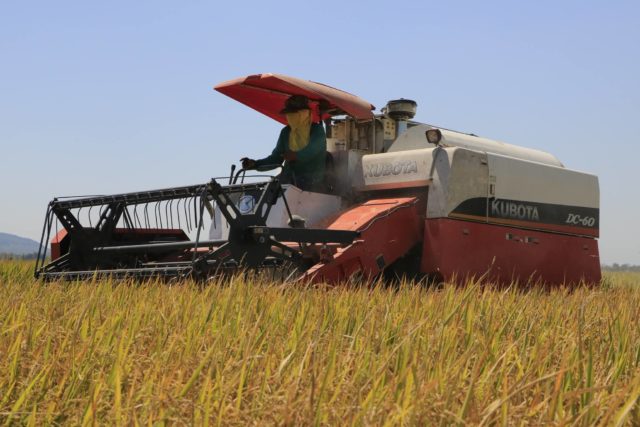SCIENCE CITY OF MUÑOZ (PIA) — The Philippine Rice Research Institute (PhilRice) reminds farmers to harvest rice crops at the right time.
This is in line with the agency’s PalayCheck System, specifically Key Check 8, which focuses on rice crop harvesting at the appropriate time.
PhilRice Rice Engineering and Mechanization Division Supervising Science Research Specialist Elmer Bautista said the right timing of harvest results in good quality rice grains, leading to higher prices in the market and preference from consumers.
“When harvesting is done too early, many grains may be wasted, resulting in less rice yield during milling, and it can also cause harvest losses. Meanwhile, when harvesting is done too late, many grains may fall off, get damaged during milling, and can also lead to harvest losses,” he explained.
As such, PhilRice shared the recommendations for proper rice harvesting at the right time.

First, farmers are advised to drain the field one to two weeks before the expected date of harvesting.
“This is to attain uniform maturity and ripening of grains, to prevent wetting of grains during harvesting, and for easy operation in the field,” Bautista said.
Second, it is recommended to harvest rice at the right maturity when 85 to 90 percent (if manual harvest) or 90 to 95 percent (if using a combine harvester) of the grains are golden yellow.
Third, farmers should harvest at the right grain moisture content (MC).
Bautista recommended the use of a grain moisture meter when available. “During the dry season, harvest the rice at 18 to 21 percent moisture content; 20 to 25 percent moisture content during the wet season,” he noted.
Lastly, after manual harvesting, farmers are encouraged to thresh the rice within a day during the wet season and within two days during the dry season.
Bautista emphasized the importance of not storing the harvested crop in the field for more than a day because this may lead to heat buildup, grain discoloration, and low-quality milled rice.
He added that farmers should avoid threshing dripping-wet rice using a mechanical thresher to prevent losses from poor grain cleaning and separation.
Farmers are likewise urged to observe the recommended threshing speed, 800 rpm for most engine-driven threshers, to thresh properly and prevent grain damage.
“More may be finished with fast engine operation, but this will result in a faster blower speed which will increase separation losses,” Bautista pressed.
By following these recommendations, farmers can expect a decrease in crop losses; a reduction in loosening and immature grains; prevention of discoloration, cracking, and grain breakage; as well as protection against pest damage.
For additional information, farmers may contact the PhilRice text center hotline at 0917-111-7423 or visit the official website at www.philrice.gov.ph. (CLJD/MAECR-PIA 3)





